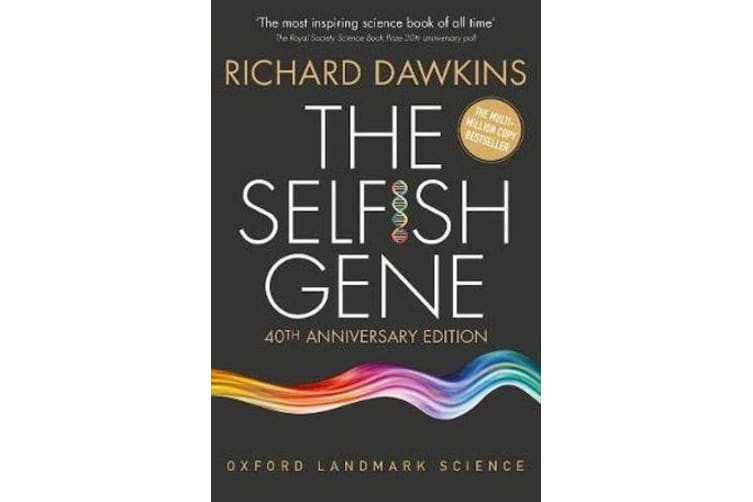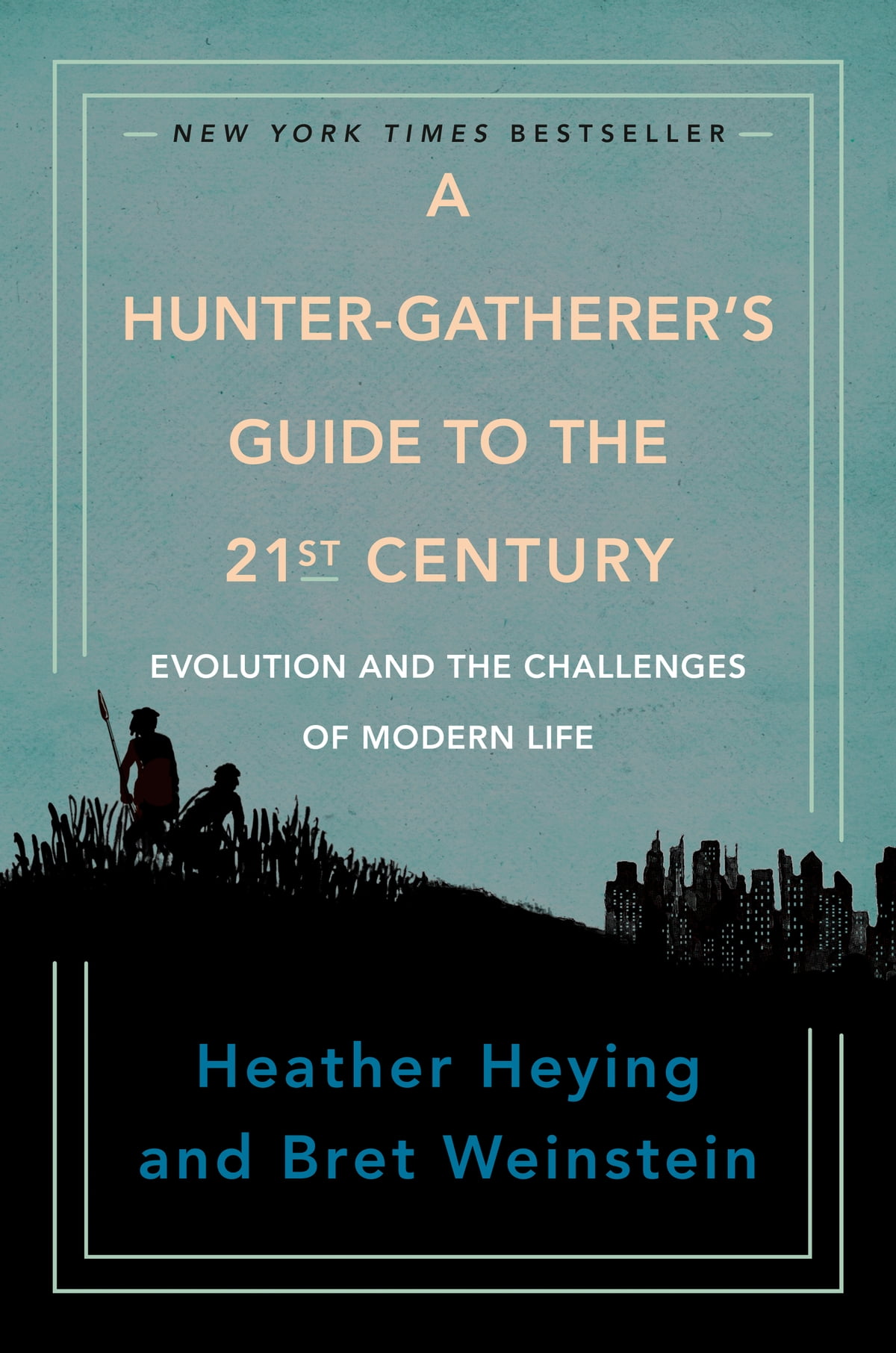The Selfish Gene
by Richard Dawkins
- Science
- Ashto =
- Jonesy =

The Selfish Gene Summary
“We are survival machines – robot vehicles blindly programmed to preserve the selfish molecules known as genes.” – The Selfish Gene
In the beginning there was simplicity. Darwin’s theory of evolution shows us the long road in which simplicity can gradually morph into complexity as we know it today – how unordered atoms could group themselves into ever more complex patterns until they ended up manufacturing people.
We do not know what chemical raw materials were abundant on earth before the coming of life, but among the plausible possibilities are water, carbon dioxide, methane and ammonia. With all the contributions of Earth and heating from the sun, these raw materials morphed into organic substances called purines and pyrimidines, the building blocks of the genetic molecule DNA itself. Under further influence of energy such as ultraviolet from the sun, they combined into larger molecules in all kinds of random arrangements. And at some point, a remarkable configuration eventuated by total accident. Let’s call it ‘a replicator’.
It may not necessarily have been the biggest or complex molecule around, but it had the extraordinary property of being able to create copies of itself. This may seem an exceedingly improbably thing to happen. In the life time of a man, things that are improbable can be treated for practical purposes as impossible. But when us humans estimate with what is probable or not, we’re not used to dealing with the time frame of hundreds of millions of years, as is the case with evolution. If you bought lottery tickets every week for hundreds of millions of years, you are likely to win several jackpots.
In the soup, some replicators were more successful than others at copying and thus becoming more ‘successful’ and abundant. The ones that thrived possessed three qualities in particular:
Longevity: A replicator with high longevity, allowing them to make more copies over their ‘life’ and hang around for longer. All other things equal, there would be an evolutionary trend towards greater longevity in the population molecules.
Speed of replication: Another important property of a replicator variety that must have been important is the speed of replication. The ones who made copies of themselves every hour, were more numerous than the ones who made copies once a week. Therefore, there would be a trend towards the speed of replication.
Accuracy of replication: If X and Y last the same time and replicate at the same rate, but X makes a mistake on average every 10th replication, and Y every 100th, Y will become more numerous. This might seem paradoxical when we’ve already concluded that copying errors are a prerequisite for evolution to occur. But although evolution seems like a ‘good thing’ especially because we are the product of it, nothing actually ‘wants’ to evolve, it wants to remain the same.
Should we then call the original replicators ‘living’? Who cares! The replicator molecules probably happened something like this regardless of whether we call it living. The dictionary word living does not mean it refers to something definite in the real world. Whether we call the early replicators living or not, they were the ancestors of life: they were our founding fathers.
Genes are in Competition
The primeval soup was not capable of supporting an infinite number of replicator molecules. The building blocks became a scarce and precious resource making competition amongst the replicators inevitable. In the competition, there would be less favoured varieties of replicator which would eventually become extinct. There was a struggle for resources and existence among replicator varieties. They did not know they were struggling, or worry about it, the struggle was conducted without any hard feelings indeed without any feelings of any kind.
The ways of decreasing your rival’s access to resources became more elaborate and efficient over time. Some replicators ‘discovered’ how to break up the molecules of their rivals chemically, then hijacked the building blocks for their own copies. Other replicators then ‘discovered’ how to protect themselves, either chemically or by building a physical wall of protein around themselves. This may have been how the first living cells appeared.
Replicators began not merely to exist, but to construct for themselves containers, vehicles for their continued existence. The replicators that survived were the ones that built the best survival machines for themselves to live in and there would be plenty of time for improvement. What weird engines of self-preservation would the millennia bring forth? Four thousand million years on, what was to be the fate of the ancient replicators?
Now they swarm in huge colonies, safe inside gigantic lumbering robots, sealed off from the outside world, communicating with it by tortuous indirect routes, manipulating it with a remote control. They are in you and in me, they created us, body and mind, and their preservation is the ultimate rationale for our existence. They have come a long way those replicators. Now they go by the name of genes, and we are their survival machines.
The Gene is in Control
Computers can beat the best human grandmasters at chess. But what is the role of the human programmer in the computer achieving this feat?
The human writes the program, but following that the computer is on its own and can’t be manipulated with throughout the game. The programmer cannot provide all the long list of good moves before the game as there are more possible games of chess than atoms in the galaxy. The programmer tells the computer the basic moves for every starting position in terms of economically expressed rules. All the programmer can do is to set up the computer beforehand in the best way possible.
Analogues to chess, genes too control the behaviour of their survival machines. Not directly with puppet strings, but indirectly like the computer programmer. They do their best to set up the best rules before the game begins, then the survival machine is on its own. The gene can no longer take control because of time lag problems.
Like the a human programming a chess program, our genes have built a brain, all-be-it with a time lag. The brain has been instructed to be fast, at times on the scale of seconds. If something happens in the world, an owl flashes overhead and in milliseconds the nervous system cracks into action – someone’s life is saved and lost. Genes don’t have the reaction time like that, but they have done their best in advance building the best executive computer – programming rules and ‘advice’ to cope with as many eventualities as they can ‘anticipate’.
But life like the game of chess offers too many different possible eventualities to anticipate. Like the chess program, the genes have to instruct their survival machine not in specific but general strategies of the living trade.
Prediction in a complex world is a chancy business. Every decision that the survival machine takes is a gamble, and it is in the business to program brains so on average the decisions pay off. The currency used in evolution is survival – strictly gene survival. But individual survival is a reasonable approximation.
Memes – The New Replicators
There has been a new kind of replicator that has evolved on this very planet. It is staring us in the face, still in its infancy, still drifting in the environmental soup but it is achieving evolutionary change at a rate that will leave the old Selfish Gene panting far behind. This new primeval is human culture and for this new replicator Dawkins invented the term ‘meme’, from Greek which means ‘imitate’.
Examples of memes are tunes, ideas, catch phrases, clothes fashions, ways of making pots or building sky scrapers. As genes propagate the gene pool by leaping from body to body via sperm or eggs, memes propagate themselves in the meme pool by leaping from brain to brain via process, which in a broad sense can be called imitation.
If an idea catches on, it can be said to propagate itself by spreading from brain to brain. When you plant a fertile meme in your mind you literally parasitize a brain, turning it into a meme’s propagation in a similar way that a virus parasitizes the gene’s survival machine.
The computers in which memes live are the human brains. All memes are subject to heavy competition for our scarce attention, so if a meme is to be successful it needs to be at the expense of rivals. The commodities they are competing for are sources of attention including radio, television time, billboard space, newspaper columns, podcast topics and library shelf space.
Meme’s become more abundant in the meme pool via the same qualities of our replicators, longevity (or retention), speed if diffusion and accuracy of the message.








